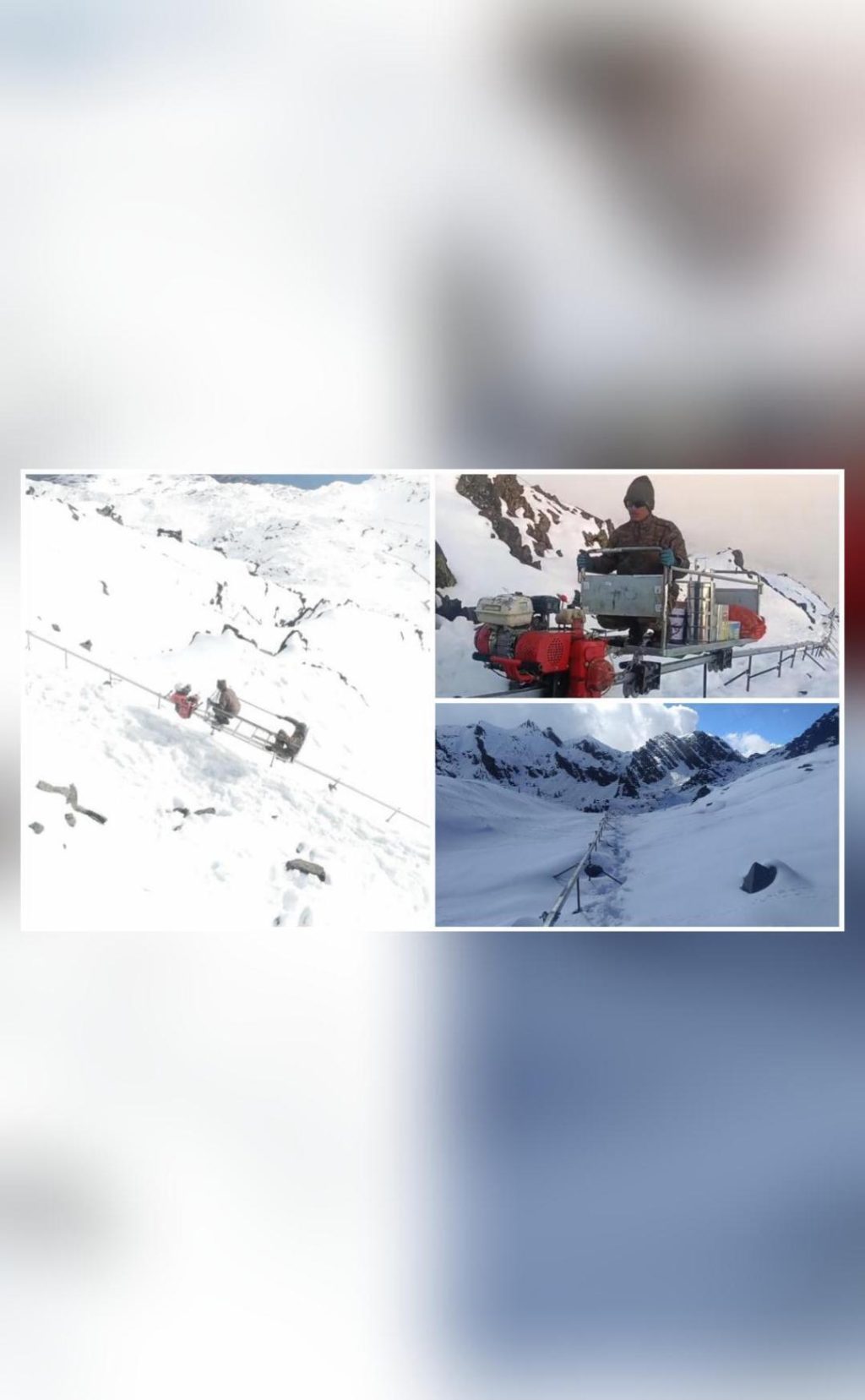
Indian Army Deploys Indigenous Mono Rail at 16,000 ft in Arunachal
In a significant boost to its operational capabilities, the Indian Army has successfully deployed an indigenous high-altitude mono rail system at an altitude of 16,000 feet in the Kameng Himalayas of Arunachal Pradesh. This innovative logistics solution is expected to greatly enhance the army’s ability to transport essential supplies and equipment over the extremely challenging high-altitude terrain of the region.
The mono rail system, which has been designed and developed indigenously, is a testament to the Indian Army’s commitment to leveraging cutting-edge technology to overcome the unique logistical challenges posed by the country’s rugged and inhospitable border regions. According to the army, this improvised logistics solution will play a critical role in boosting operational logistics, facilitating the transportation of operational essentials, and enabling efficient logistics over an extremely challenging high-altitude terrain.
The system, which has been deployed in one of the most remote and inaccessible regions of the country, has the capacity to transport over 300 kg of load in a single run. This will greatly enhance the army’s ability to maintain a high level of operational readiness, even in the most inhospitable and hard-to-reach areas of the country.
The deployment of the mono rail system is a significant achievement for the Indian Army, and is a reflection of its commitment to harnessing the power of technology to enhance its operational capabilities. The system is expected to play a critical role in supporting the army’s operations in the region, and will help to ensure that troops deployed in these remote and inhospitable areas have access to the supplies and equipment they need to carry out their duties effectively.
The Kameng Himalayas, where the mono rail system has been deployed, is one of the most rugged and inhospitable regions of the country. The region is characterized by steep slopes, dense forests, and fast-flowing rivers, making it extremely challenging to transport supplies and equipment over land. The deployment of the mono rail system will help to overcome these challenges, and will enable the army to maintain a high level of operational readiness, even in the most remote and inaccessible areas of the region.
The use of indigenous technology to develop the mono rail system is also a significant achievement, and reflects the Indian Army’s commitment to promoting self-reliance and indigenization in the defense sector. By leveraging indigenous technology, the army is able to reduce its dependence on foreign suppliers, and is able to develop solutions that are tailored to its specific needs and requirements.
The deployment of the mono rail system is also a testament to the Indian Army’s commitment to innovation and experimentation. The army has a long history of embracing new technologies and innovative solutions, and has been at the forefront of efforts to leverage technology to enhance its operational capabilities. The deployment of the mono rail system is just the latest example of this commitment, and reflects the army’s willingness to think outside the box and explore new and innovative solutions to complex logistical challenges.
In addition to its operational benefits, the deployment of the mono rail system is also expected to have a significant impact on the local economy. The system will help to create new opportunities for employment and economic development in the region, and will enable local businesses to tap into the army’s supply chain. This will help to stimulate economic growth and development in the region, and will contribute to the overall well-being and prosperity of local communities.
In conclusion, the deployment of the indigenous mono rail system at 16,000 feet in the Kameng Himalayas of Arunachal Pradesh is a significant achievement for the Indian Army. The system, which has been designed and developed indigenously, will play a critical role in boosting operational logistics and facilitating the transportation of operational essentials over an extremely challenging high-altitude terrain. The use of indigenous technology to develop the system is a testament to the army’s commitment to promoting self-reliance and indigenization in the defense sector, and reflects its willingness to think outside the box and explore new and innovative solutions to complex logistical challenges.
For more information on this story, you can visit the following link: https://www.youtube.com/watch
News Source: https://www.youtube.com/watch





